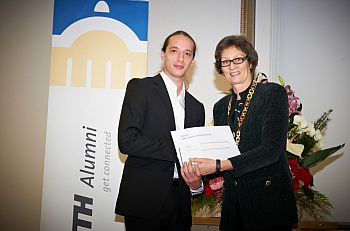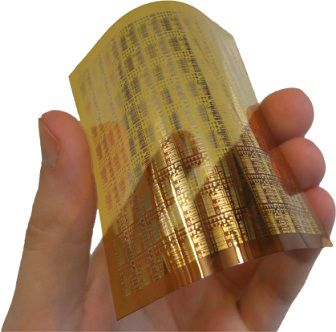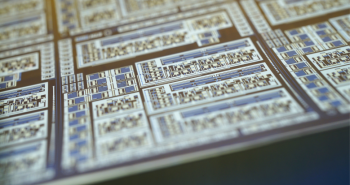Scientist wins award for research into flexible, wearable technology
A Sussex scientist has won a medal for his research into flexible electronic circuits that can be used in new technologies such as bendable phones, smart clothing and sensory skin for prosthetic limbs.
 Dr Münzenrieder recieves his ETH medal from Professor Sarah Springman, the ETH's Rector
Dr Münzenrieder recieves his ETH medal from Professor Sarah Springman, the ETH's Rector
 Dr Münzenrieder’s PhD focused on the creation of flexible electronic circuits that can be incorporated into displays and textiles.
Dr Münzenrieder’s PhD focused on the creation of flexible electronic circuits that can be incorporated into displays and textiles.
 By using indium gallium zinc oxide rather than silicon, flexible circuits can be produced on a large scale while retaining a high level of performance.
By using indium gallium zinc oxide rather than silicon, flexible circuits can be produced on a large scale while retaining a high level of performance.
Dr Niko Münzenrieder was awarded the medal earlier this month by the Swiss Federal Institute of Technology Zurich (ETH), where he completed his PhD.
The ETH medal is the Institute’s highest distinction for a doctoral thesis – awarded annually, it is reserved for the top dissertations produced by ETH students in a given year.
Dr Münzenrieder, now a Lecturer in Sensor Technology in Sussex’s School of Engineering and Informatics, was presented with the award by Professor Sarah Springman, the ETH’s Rector, at the Institute’s campus in Zurich, Switzerland.
Dr Münzenrieder’s PhD focused on the creation of flexible electronic circuits on thin plastic foil that can be incorporated into displays and textiles.
By using indium gallium zinc oxide rather than silicon as a semiconductor, he was able to develop circuits that can be produced on a large scale while retaining a high level of performance.
He explained: “There are many applications for flexible electronics. They could be used to create sensory skin covering prosthetic limbs, giving wearers the sense of touch.
“Smart textiles – fabric interwoven with electronic circuits – can also have medical or fitness uses, allowing your clothes to measure data such as temperature and blood oxygenation.
“However, I think the first place most consumers will come into contact with flexible circuits is in electronic displays for smartphones and tablets. Introducing flexibility would mean that these displays could be rolled up and stored when not needed.”
When developing flexible circuits, Dr Münzenrieder had to overcome two main challenges: “First, plastic is an unstable medium that can bend, shrink and expand, and the electronics have to match those changes.
“Secondly, circuits are usually manufactured using temperatures hot enough to burn plastic. Producing flexible electronics requires finding a manufacturing process that works for both the circuits and their plastic substrate.”
Since the beginning of this year, Dr Münzenrieder has been working in Sussex’s Sensor Technology Research Centre (STRC).
The STRC is situated within the School of Engineering and Informatics, based in the Richmond building on campus.
It focuses on exploring sensor operation and mobile communications and networks, while also tackling projects with applications in specific areas including security and forensics.
